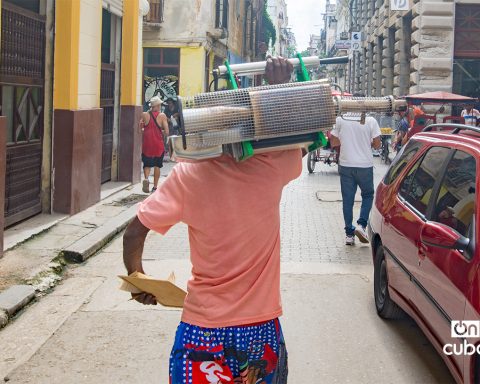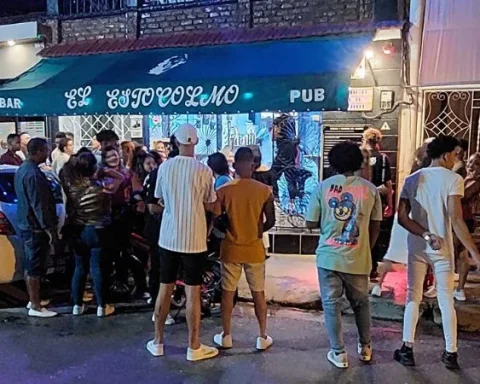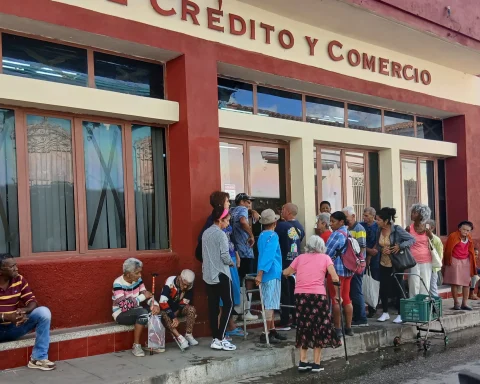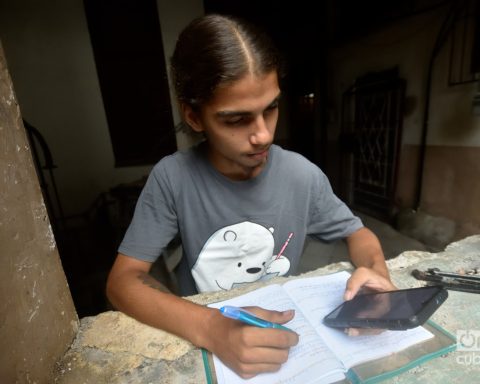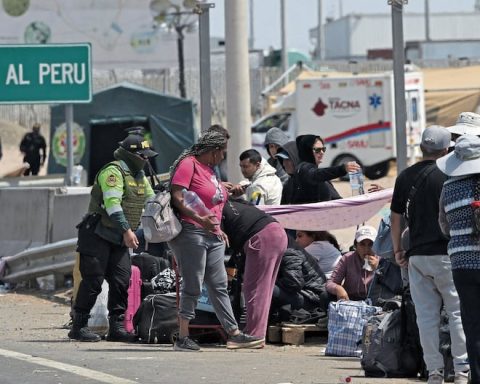VILLA CLARA, Cuba. — When each consultation ends, Jorge Martínez, a santero resident in Santa Clara County, tells his godchildren to give him what they can. He is 85 years old, has a derisory retirement and suffers from a prostate disease that has limited him from practicing Santeria on a larger scale. Jorge has been crowned Shangó for more than thirty years and divination with the snails helps him “stretch out the month”, although he does it more out of faith than to solve his life.
Oblivious to the current rates of the Yoruba religion in the city, he is unaware that the price of each consultation ranges between 150 and 200 pesos. Before the monetary orderthe santeros used to charge between 10 or 15 pesos, but logic indicates that, if salaries and the cost of a meal go up, the “spiritual benefits” should also go up.
The practice of the Rule of Ocha, although it is charged through the so-called right, does not work as an approved self-employment activity on the Island and may never be, for obvious reasons. “Imagine a santero paying the ONAT or standing in line to get a license,” says Jorge, scandalized by the 350 pesos that a bunch of bananas costs, an offering that is usually given to his head saint.
The new Constitution contemplates in its article 15 that “the State recognizes, respects and guarantees religious freedom” and adds in section 57 that “everyone has the right to profess religious beliefs or not, to change them and to practice the religion of their choice, with due respect for others and in accordance with the law.”
This last sentence puts an end to a rather dark stage that the country experienced, when religious practices should have remained ostracized and the mere fact of dressing in white and performing ceremonies or rituals even in their own homes was sanctioned. Even today, the country’s santera community is among the most vulnerable, despite the fact that lately several have been seen Cuban leaders in a certain flirtation with the Yoruba faith.
Another santero from Villa Clara who introduces himself by his name of Ocha, Olufandei (name of Obbatalá’s son), warns that the current price to crown the saint is around 115,000 pesos, including the cost of animals and paraphernalia. “Religion is pretty hot. Just a saint’s apartment is between 18,000 and 25,000 pesos, “he adds.
In general, people usually crown the saint at the home of their godfather or godmother, for which a fairly considerable amount must be paid: “The right of land is the clean money that is given to the godfather as payment for the consecration. It is money that is divided among all the parties involved in the saint: oyugbona, oba oriaté, santeros raised up to the herbalists, animal skinners, ebbó dumpers and cooks. It could be affirmed, then, that religious practice is also a provider of employment sources.
Despite the amount of money involved in any Regla de Ocha ceremony, several santeros confirm that the number of initiates has grown in the last two years. “The very uncertainty and vulnerability left by the pandemic has conditioned many people to seek refuge in the Rule of Ocha. The general thought is that, since the prices of everything have risen so much, it is better to sacrifice now than to wait until things get worse”.
Rule of Ocha: also “maintained” from the outside
Miami is the most important source of supply for Santeria paraphernalia. The accounts, snails and ashes of saints are imported from other countries by “mules”, sent through parcel agencies or brought to the Island by people who come to visit their relatives.
A two-kilogram bag of cowries (consultation snails) is sold in the United States for 15 dollars. It can contain up to 1,000 snails, divided by 18, which are the hands used in religion, and each one is sold for 300 pesos on the Island, giving a net profit of 3,000 pesos for every 100 snails, taking into account account informal currency exchange.
Rodolfo Herrera, owner of the Los Meyi store, located in Centro Habana, also promotes his articles through the group Religious Articles Havana. For example, a doll dressed as a gypsy costs 7,000 pesos in this store. The fabrics to dress figures that acquire certain symbolism in the Rule of Ocha and spiritism can only be purchased in establishments by MLC, satin is generally used, hence its cost has skyrocketed in the last year.

“Religion has not only become more expensive. After the monetary change, everything became more expensive”, confirms the young man. “Here in Havana it works differently: we buy the products wholesale from other religious houses that are dedicated to producing these effects. These same ones are sold to people from other provinces. For example, I myself have been buying and people from Guantánamo have arrived who have placed orders in advance and they separate them so that they are not shipped.”
In other publications of the same group, a quarter of a saint is offered for Oshún with her tureens and other imported accessories whose total cost is 11,500 pesos. While a head necklace can be worth more than 1,000 pesos, packages of beads are sold wholesale at 350, an offer that owners of religious stores in the interior of the country usually take advantage of. A package of 600 colored beads ordered by Amazon in Miami does not exceed seven US dollars.
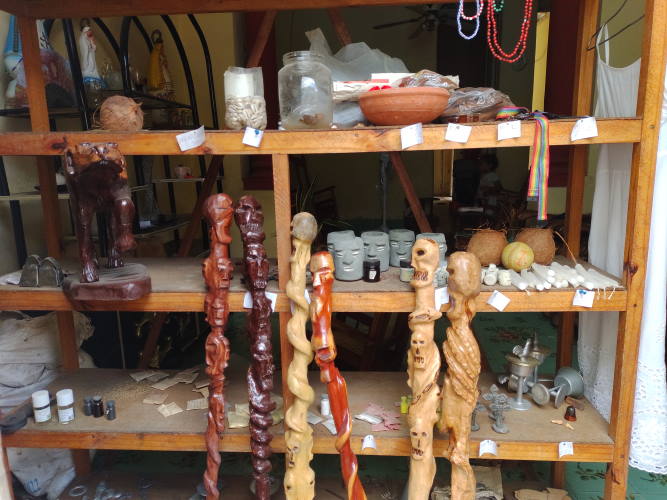
Ashe by MLC
“Imports of religious articles are a great business,” says Lázaro Leyva, another Havanan contacted via Messenger who promotes his articles in the same group. “With what I sell I get enough for the round trip ticket.” In addition to the beads, Lázaro brings with him bundles of the so-called “Iyawó basket”, which includes white clothes, shoes, umbrellas and lingerie used during the year of consecration, which he sells in MLC or its equivalent in national currency. .
Reports from people who practice Afro-Cuban religions in Havana confirm that many of the so-called animal dealers already offer hens, chickens, roosters, goats and pigeons in Freely Convertible Currency even with home delivery. This modality has not yet reached other central and eastern provinces.
“Like everything in this country, religion can also become a business,” confirms Leydi del Valle, a woman from Santiago living in Havana who is dedicated to supplying religious stores from all over the country, especially with cocoa bars brought in quantity from Baracoa.
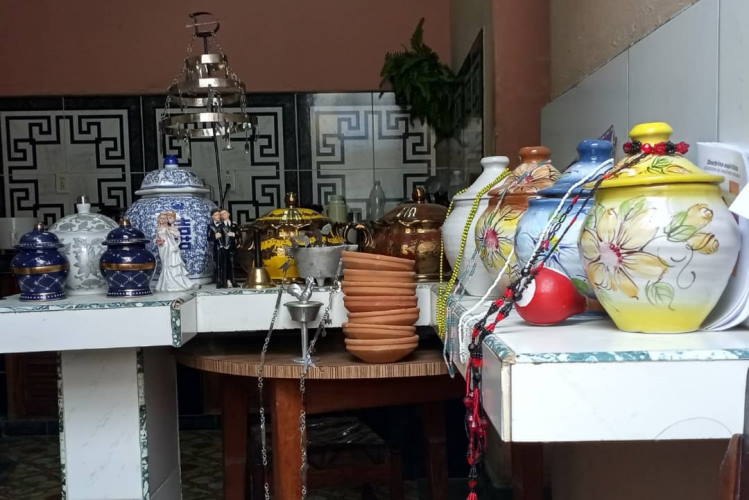
“Many houses prefer to make them saints or give them to foreigners and Cuban-Americans because the payment is in dollars, and the black market exchange rate is almost never taken into account. The prices for them are differentiated because they are generally in a hurry to solve their situation”.
Santeros surveyed for this report also reveal the interest of many godchildren and newly initiated in the Afro-Cuban faith in receiving certain orishas and receipts that allow them to open the paths to emigrate to other latitudes. This is one of the most frequent requests in recent months.
“Most of the people who come to Cuba to solve their problems do so because their godparents are here,” continues Leydi, crowned with Eleggua, the orisha that represents ease of business. “In many countries they fine you if you slaughter animals. It is also a way to help their religious parents financially because there are some with a lot of money, but others are eating tremendous cable. Everything has become so expensive, that you solve your life with not a sack of faith”.
Receive information from CubaNet on your cell phone through WhatsApp. Send us a message with the word “CUBA” on the phone +1 (786) 316-2072, You can also subscribe to our electronic newsletter by giving click here.


